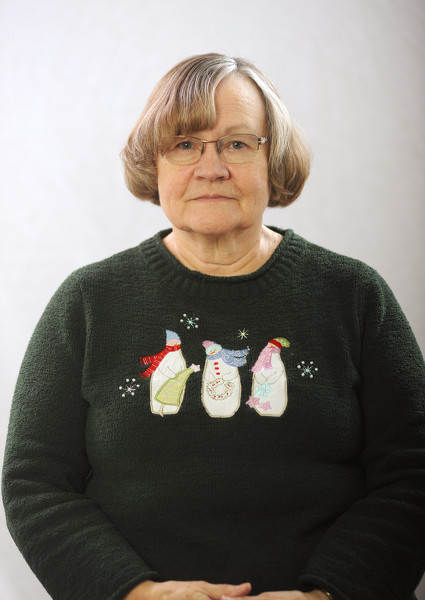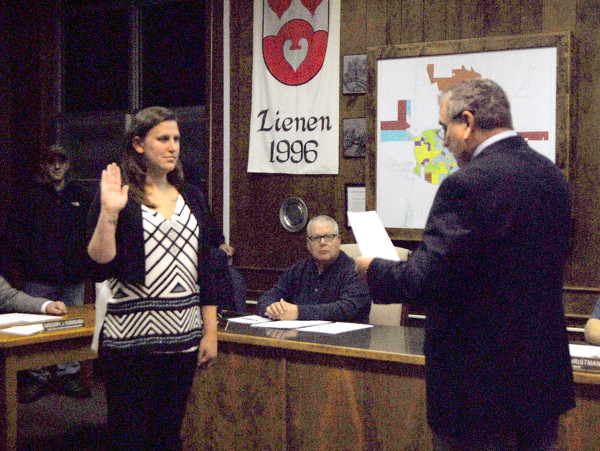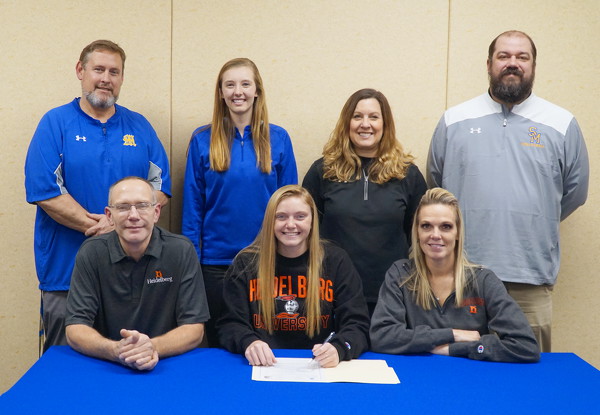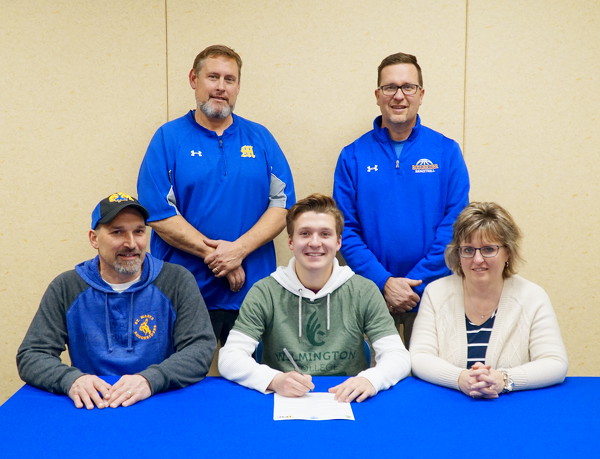Tuesday, December 10th, 2019
Suicides are on the rise. What can you do?
Resources are available for people in need
By Leslie Gartrell

Photo by Dan Melograna/The Daily Standard
Margie Griesdorn, chairperson of Area Suicide Support Resources, talks about suicide rates in Ohio and raising suicide-prevention awareness.
COLDWATER - Margie Griesdorn had found the man of her dreams - a kind, well-respected business owner known for his charitable and giving nature.
He had no children of his own but opened his arms to her daughter and loved her like his own. Griesdorn cherished 11 years of marriage with the love of her life, Randal, until he died by suicide in 2012 at the age of 56.
From 2007 to 2018, the number of suicide deaths increased nearly 45% in Ohio, according to an October report from the Ohio Department of Health. In 2018, 1,836 suicides were reported in Ohio, and the highest suicide rate - the number of suicide deaths per 100,000 population - was among adults 45-64 years old.
More than seven years after her husband's death, Griesdorn is open about her loss and hopes to raise awareness about suicide, which ODH says is a "major public health problem."
"I think it should be shocking to everyone," Griesdorn said of the report.
She and her husband had been in a motorcycle accident years before his death, and he had suffered an injury that often left him in pain. She said her husband may have struggled to come to grips with the fact that his injury meant he would no longer be able to work like he had.
About six to eight months before his death, Griesdorn said she noticed a change in his behavior. He worried about everything and became anxious.
"In the end, I feel like he took his life because he thought that we - his family, his business - would be better if he wasn't here," Griesdorn said.
Griesdorn now chairs Area Suicide Support Resources, ASSURE. Their mission is to increase awareness of suicide prevention options offered by community outreach programs throughout Mercer County and the surrounding area.
The group was organized in early 2018 by like-minded people whose lives have been affected by the suicide of a loved one or close acquaintance, Griesdorn said. She had previously completed walks with the American Foundation for Suicide Prevention, but no money from the walks stayed locally. Griesdorn decided she would start a similar program in Mercer County to keep funds local and help people here.
In addition to outreach practices, ASSURE also seeks to support those experiencing thoughts of suicide and their families, support suicide loss survivors, provide support resources and support groups and provide financial assistance to those unable to pay a suicide-related expense, such as funeral expenses or co-pays.
"We want to help people in this county," Griesdorn said.
In a previous interview, Sandy Goodwin, spokesperson for the Tri County Alcohol, Drug Addiction and Mental Health Services Board of Van Wert, Mercer and Paulding Counties, had said while Foundations Behavioral Health Services and others, provide services in Mercer County, people with more severe needs may struggle to get the care they need.
"Is there enough resources? No," Goodwin had said. "There's no high level of care for more serious conditions."
Goodwin had said Mercer County has great continuous-care services, considering the size of the county and the number of services available. However, those experiencing more serious conditions might not have access to the care, such as in-patient psychiatric care, they need.
"Being in a rural setting puts up more barriers," she had added.
Roberta Donovan, Foundation clinical director, has said people are often reluctant to get the care they need. Griesdorn said she has noticed many Mercer County residents don't want to let on that something might be wrong.
"We all hold feelings inside," Griesdorn said.
Now that the weather is colder and sunshine is scarce, many people will experience Seasonal Affective Disorder, or SAD, Donovan said.
SAD often starts in the fall and may continue through winter, with symptoms such as fatigue, depression, hopelessness and social withdrawal, according to the Mayo Clinic.
Donovan added that fall and winter can spur anxiety and symptom flare-ups for people with mental illness. The added stress of affording holiday gifts for loved ones and visiting family can ramp up the tension.
"It does happen here," Griesdorn said of suicide. "People need to be more understanding of other's emotions."
According to Mercer County Sheriff's logs dating back to Nov. 1, law enforcement and/or EMS squads responded to 12 suicide threats.
Two squad runs were requested by people experiencing suicidal thoughts or ideations, and law enforcement was told to be alert for suicidal or possibly suicidal people three times.
According to the 2016 Community Health Needs Assessment by Mercer Health, in a 30-day period, nearly half of Mercer County residents said they had at least one day during which their mental health was not good
More than two-thirds (71%) of Mercer County residents said they "always" or "usually" get the social or emotional support they need. However, 14% of residents said they "rarely" or "never" get this support.
More than a quarter of residents said poor physical or mental health kept them from doing usual activities, such as self-care, work or recreation at least one day in the past month. Finally, 10% said they felt sad enough for two weeks in a row in the past year that they halted their usual activities.
Griesdorn said she would like to see people be more open about how they're feeling and not be afraid to talk with someone. In the same vein, she wished people were more understanding and aware of others' feelings.
ASSURE offers "Into the Light," a suicide support group that meets on the second Tuesday of each month at the Richardson-Bretz Building in Celina. Those who have been affected by suicide are welcome to talk with others who've been through the same situation, whether recently or years ago.
According to ODH, warning signs of suicide include,
• a major change in mood or behavior, appearing consistently unhappy/depressed, irritable, withdrawn from family or friends.
• poor grades in school or other bad performance in extracurricular activities.
• high-risk behaviors, including use of alcohol or other substances.
• problems with concentration and changes in energy level, appetite or sleep schedule.
• expressing feelings of hopeless or not wanting to live anymore.
• hurting themselves, e.g., wrist-cutting, burning self.
• history of depression or family history of depression.
If people need urgent assistance for themselves or a loved one, contact ADAMHS's no-cost confidential crisis line at 800-567-4673 at any time of day or text "4Hope" to 741741.
People can also call the National Suicide Prevention Lifeline at 800-273-8255 if they are in a suicidal crisis or emotional distress. The lifeline provides free and confidential emotional support 24 hours a day, seven days a week, through a national network of more than 150 local crisis centers.
Suicide resources:
Numerous local, state and national resources are available for people who are depressed or having suicidal thoughts.
Area police and sheriff's offices can also help residents
get assistance.
Other agencies can be reached at:
• Foundations Behavioral Health Center, Celina, 419-584-1000.
• Coleman's Professional Services, St. Marys, 419-229-2222.
• Auglaize County We Care Center, 419-394-7451.
• Tri County Alcohol Drug Addiction And Mental Illness Services, Van Wert, 419-238-5464.
• Family Resources Center, Lima, 419-222-1168.
• Ohio Suicide Prevention Foundation, 614-429-1528.
• The Jason Foundation, 615-264-2323.
If people are showing signs of suicide, here are some actions to take:
• Ask directly about thoughts of suicide. Asking about suicide does not increase the risk of suicide but does open up conversation.
• Listen to what they need.
• Keep them safe by keeping lethal means away from them.
• Call 911 if necessary.
• Help them connect with ongoing support, such as a local crisis line, the National Suicide Prevention Lifeline (800-273-8255) or the Crisis Text Line (text "4hope" to 741 741).
• Check back the next day to see how they are doing.
• Encourage them to contact a counselor for more help.
Additional highlights of the ODH report
• From 2007 to 2018 the number of suicide deaths increased nearly 45% in Ohio.
• Suicide rates are highest among white, non-Hispanic males.
• From 2007 to 2018 the number of suicides among youth aged 10-24 increased by 56%, and the suicide rate increased by 64%. In 2018, 271 of Ohio's suicide deaths were in this age group.
• From 2014 to 2018 the suicide rate among black non-Hispanic males increased nearly 54%.
• From 2007 to 2018 the suicide rate among older adults age 65+ increased nearly 48%
• Males are disproportionately burdened by suicide across the lifespan, and their suicide rate is nearly four times the rate of that of females.

Photo by Dan Melograna/The Daily Standard
Nancy Grieshop, author of "Destination Sanity," shows the number of deaths related to accidents compared with deaths from overdoses in Mercer County on Friday afternoon during a talk with students about addiction and suicide at Fort Recovery High School.




